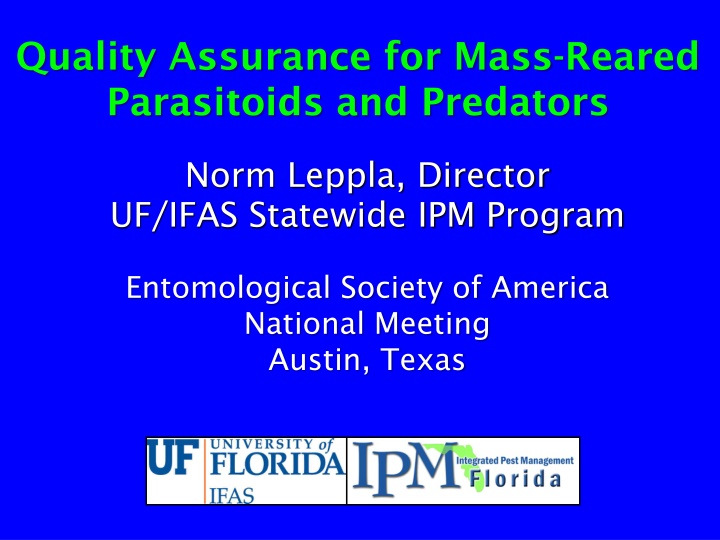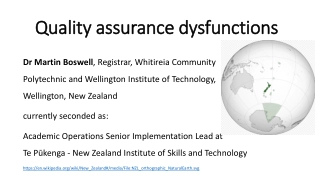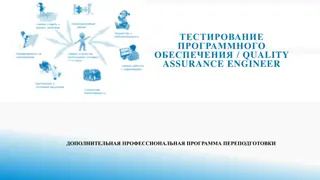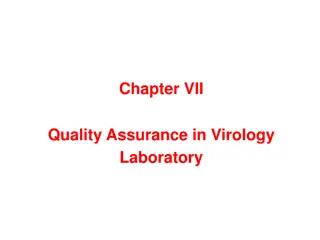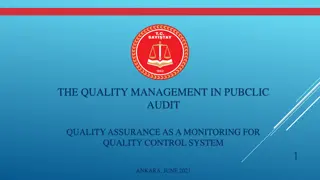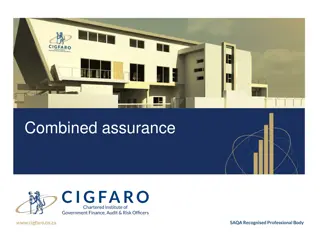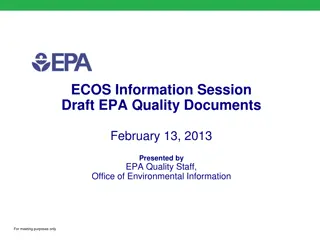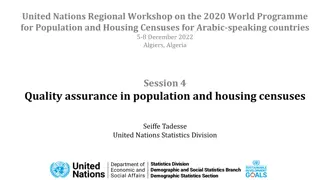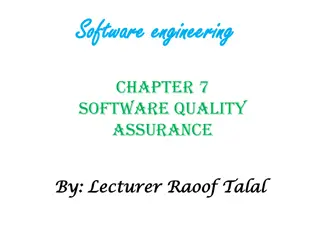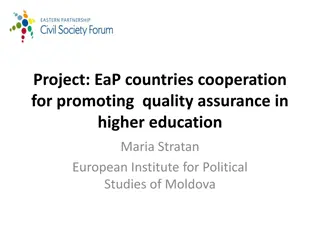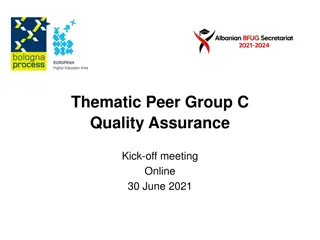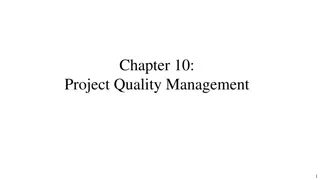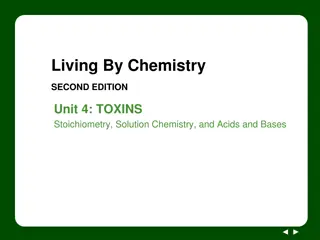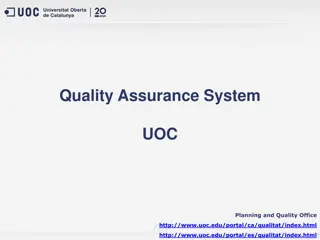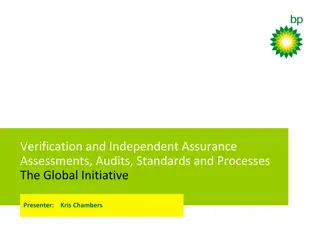Quality Assurance for Mass-Reared Natural Enemies
Comprehensive insights into quality assessments, customer involvement, and a complete quality assurance system for mass-reared parasitoids and predators. Explore the importance of controlled variables, customer satisfaction, and product quality feedback loops in maintaining high-quality natural enemies for effective pest management.
Download Presentation

Please find below an Image/Link to download the presentation.
The content on the website is provided AS IS for your information and personal use only. It may not be sold, licensed, or shared on other websites without obtaining consent from the author.If you encounter any issues during the download, it is possible that the publisher has removed the file from their server.
You are allowed to download the files provided on this website for personal or commercial use, subject to the condition that they are used lawfully. All files are the property of their respective owners.
The content on the website is provided AS IS for your information and personal use only. It may not be sold, licensed, or shared on other websites without obtaining consent from the author.
E N D
Presentation Transcript
Quality Assurance for Mass-Reared Parasitoids and Predators Norm Leppla, Director UF/IFAS Statewide IPM Program Entomological Society of America National Meeting Austin, Texas
QA for Mass-Reared Parasitoids and Predators A Complete Quality Assurance System Customer Involvement in Quality Assurance Quality Assessments of Mass-Reared Natural Enemies Research on Quality Assessment for Mass-Reared Parasitoids and Predators
Customer Involvement in Quality Assurance Customers are more satisfied if they are involved and educated in the release and evaluation of the natural enemy products they purchase. The most successful producers and suppliers provide technical support to help customers assure that the natural enemies they purchase are effective. Producers should sub-sample every package or batch for product quality. Natural enemies should be removed from shipping containers and used immediately. Customers should be given quick and simple product assessment methods. Customers should quickly return feedback about product quality to the suppliers who in turn inform the producers to take rapid corrective action. Producers should be able to control the variables that determine product quality and reliably ship specified numbers of high quality natural enemies. Suppliers should provide application guidelines and deliver the required number of high quality natural enemies to match the level of pest infestations.
Quality Assessments of Mass- Reared Natural Enemies Species Results Encarsia formosa Number ok, 41% emerged, 89-95% survival at 2 days Number low, 86% alive All were C. rufilabis Number low, 80% alive, 82-96 % survival at 2 days, 9-22% were parasitized Arrival time, emergence and flight ability variable, sometimes contained Eretmocerus spp. Arrival time and emergence variable (61-69%) with just above 50% females, hyperparasitoids, I.D. innacurate, emergence before receipt, parasitism low Averaged 1,663.1+17.3 with 71.9+3.6% emerging and 88.9% flying, more consistent that A. colemani live parasitoids 1-28 days after receipt, sex ratio, and female size variable, 0.393-0.644 females Parameters Number of live parasitoids, identity, purity, hyperparasites, emergence on arrival, rate of adult emergence, total adult emergence, size (length of hind tibia) or weight, sex ratio, longevity, fertility, fecundity, flight capability (motility), and parasitism Trichogrammapretiosum Chrysoperla carnea Hippodamia convergens Encarsia formosa Aphidius colemani Aphidius matricariae Aphytis melinus Additional Species Studied Aphidoletes aphidimyza Eretmocerus spp Trichogramma spp Splangia cameroni Orius insidiosus Epidinocarsis lopezi
Type of Research Research Priorities Natural enemy effectiveness in controlling target pests Product development Quality assurance systems Feasibility/market analysis Rearing facilities Mechanized equipment Rearing materials Natural and artificial diets Rearing and harvesting techniques Production quality control Process quality control Product quality control Mass production Product handling and storage Automated counting technology Improved packaging and shipping Extended use period Efficient scouting techniques Optimal release numbers, rates and timing Mechanized application technologies Efficient product evaluation procedures Utilization quality control Utilization Site-specific pest prevention Systems to maximize the effectiveness of natural enemies Natural enemy use with pesticides Systems with multiple products and pests Effectiveness in seasonal and perennial crops Application environment
For more information or a copy of this presentation please visit: http://ipm.ifas.ufl.edu
